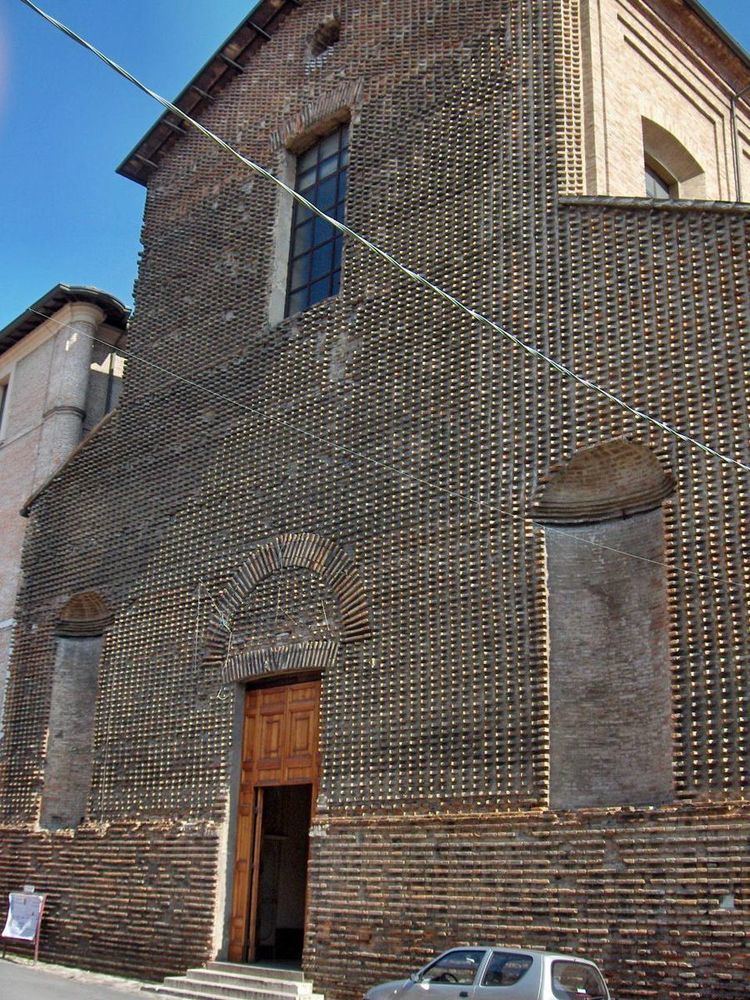San Francesco Saverio also known as the Church of the Suffragio is a Baroque-style Roman Catholic church located in Piazza Ferrari #12 in Rimini, Italy.
The church was commissioned by the Jesuit order and built in 1721. The Jesuits previously had been housed in a site in Santa Maria a Mare. The design had been attributed to either Giovanni Francesco Buonamici or Francesco Garampi.
The layout is modelled on the Gesù church in Rome. Adjacent to the church was once the Jesuit convent, which was for years a hospital, and now serves as Civic Museum. The facade remains incomplete in brick, but the interior is richly decorated, despite the suppression of the Jesuits by papal bull in 1773.
An inventory in 1864 (also 1901) cited the following works in the church:
St Louis Gonzaga by Andrea BarbianiSt Martin Bishop with St John the Baptist and the Virgin in Glory by Nicolo FrangipaneCrucified Jesuit Martyrs in Japan (including the Blessed Paulo Miki) by Guido Cagnacci, right presbytery (still in situ)St Nicola and the Souls of Purgatory attributed to Visacci of Urbino, 1st altar leftSt Antony (oval) by Giuseppe Soleri Brancaleoni, 1st chapel on leftDeparture from Calvary attributed to Zuccheri studio, 1st chapel on leftGuardian Angel by Angelo Sarzetta, 1st chapel on leftVirgin with Child, St Joseph and St Peter attributed to Antonio PuglieschiMarriage of the Madonna by Giovanni Battista CostaDeposition, by Giovanni Cesare Grazi, a copy of the work of Barocci located in SinigalliaGlory of St Ignatius by Rotari, altar by GF Buonamici, in transeptSt Francis Xavier Preaching in the Indies, main altar, by Vincenzo PisanelliSt Emidius, Patron of Rimini (1788) by GS Brancaleoni, left transept, placed after earthquake of 1786St Francis Borgia in Adoration of the Virgin painted by Pietro Rotari, in 1st altar rightAnnunciation, by Tuscan painter, left presbyterySt Stanislao by Giovanni Maria delle Piane (Molinaretto), copy of GG dal Sole painting, sacristy.St Michael Arcangelo by Sarzetto, sacristyBambino che schiaccia il Drago, by Giovanni Francesco Nagli, sacristy
